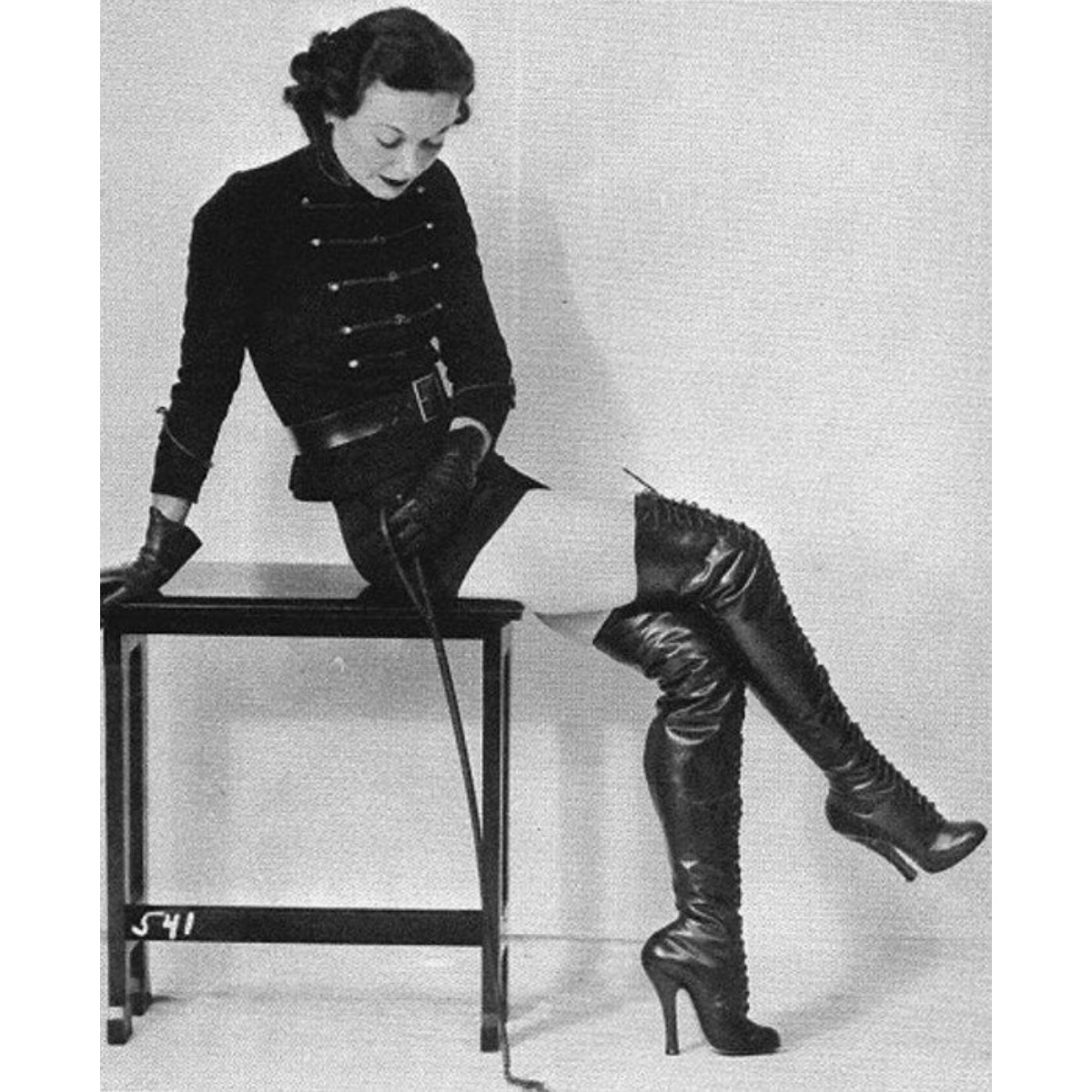Dominatrix fashion has long intrigued and captivated both participants and observers of BDSM culture. This unique style, characterized by its bold and commanding aesthetics, has a rich history that reflects broader cultural shifts and societal attitudes. As interest in the historical and cultural background of BDSM and fetish fashion grows, it’s essential to explore the history and evolution of dominatrix outfits. This article delves into the origins, key influences, and significant developments that have shaped dominatrix fashion over the years.
Take a look at our fetish clothing reviews and check out the best range of fetish clothing at the best possible, exclusive prices by clicking here.
The History and Evolution of Dominatrix Fashion

Early Influences and Origins
The origins of dominatrix fashion can be traced back to early representations of powerful women in mythology and history. Figures such as the goddesses of ancient mythology, warrior queens, and female rulers have long symbolized strength and authority. These early influences laid the groundwork for the aesthetics and symbolism found in modern dominatrix fashion.
In the late 19th and early 20th centuries, fetish fashion began to emerge more prominently. During this period, the fascination with corsets, leather, and other materials associated with power and control started to take hold. These early expressions of fetish fashion were often underground, reflecting the societal taboos surrounding sexuality and power dynamics. The history of dominatrix fashion is deeply rooted in these early explorations of fetish aesthetics.
Check out this range of dominatrix outfits by clicking here.
The Mid-20th Century: Fetish Magazines and Mainstream Awareness
The 1940s and 1950s marked a significant turning point in the evolution of dominatrix outfits, thanks in large part to the rise of fetish magazines like Bizarre. These publications played a crucial role in bringing fetish fashion into the public eye, featuring images of women in corsets, high boots, and leather outfits that would come to define the dominatrix look.
Key figures such as Bettie Page were instrumental in popularizing this aesthetic. Known as the “Queen of Pinups,” Bettie Page’s work in fetish modeling helped bring BDSM fashion into the mainstream consciousness. Her iconic images in corsets, garters, and whips set a standard for dominatrix attire that remains influential today.
During this period, the aesthetic of dominatrix outfits began to solidify. The combination of latex, leather, and provocative accessories became synonymous with the dominatrix persona. This era laid the foundation for the continued evolution of dominatrix fashion, making it more accessible and accepted in broader cultural contexts.
The 1970s and 1980s: Punk and Leather Scenes
The 1970s and 1980s saw the influence of the punk movement and leather subculture significantly shape dominatrix fashion. These subcultures embraced rebellion and non-conformity, which resonated with the themes of power and control inherent in dominatrix attire.
Dominatrix outfits became more visible and accepted within these subcultures. The leather scene, in particular, adopted and adapted elements of fetish fashion, integrating them into the broader aesthetic of punk and goth styles. The combination of leather jackets, corsets, and heavy boots became a staple in the underground scenes, further popularizing the dominatrix look.
Key fashion designers and cultural icons of this era, such as Vivienne Westwood and Siouxsie Sioux, embraced and promoted these styles. Their work helped bring dominatrix fashion into the spotlight, influencing both mainstream and alternative fashion worlds.
The 1990s to Early 2000s: Mainstream Acceptance and Media Representation
The 1990s and early 2000s marked a period of increasing mainstream acceptance for BDSM and dominatrix fashion. Media and entertainment played a significant role in shaping public perceptions during this time. Films, music videos, and celebrities began to incorporate elements of dominatrix fashion into their visuals, further normalizing the aesthetic.
Iconic moments, such as Madonna’s “Erotica” music video and the character of Catwoman in the Batman series, brought dominatrix fashion into the limelight. These representations showcased the allure and power of dominatrix attire, influencing popular culture and fashion trends.
This era also saw the rise of fetish fashion designers who specialized in creating high-quality, stylish dominatrix outfits. These designers contributed to the acceptance and appreciation of dominatrix fashion as a legitimate and respected style within both fetish and mainstream circles.
Modern Dominatrix Fashion: Trends and Innovations
Today, dominatrix fashion continues to evolve with the use of new materials and technologies. Modern trends include innovative designs that incorporate elements such as LED lighting, 3D-printed accessories, and advanced textiles. These advancements have expanded the possibilities for creating striking and imaginative dominatrix outfits.
The influence of high fashion and mainstream designers has also grown. Designers such as Alexander McQueen and Thierry Mugler have incorporated dominatrix-inspired elements into their collections, further blurring the lines between fetish fashion and haute couture.
Notable contemporary designers and brands specializing in dominatrix outfits continue to push the boundaries of this unique style. Their work ensures that dominatrix fashion remains dynamic, relevant, and ever-evolving.
The evolution of dominatrix outfits reflects broader cultural trends and societal attitudes towards power, sexuality, and self-expression.
Cultural and Social Impact
Dominatrix fashion extends beyond aesthetics, influencing broader cultural and social discussions around gender, power, and sexuality. By challenging conventional norms, these outfits have opened up dialogues about the dynamics of control and submission, often highlighting the fluidity of power roles. This fashion also brings visibility to the BDSM community, encouraging more open conversations about sexual expression and identity.
However, dominatrix fashion is not without its controversies. Misconceptions and stigmas persist, sometimes leading to negative perceptions. Despite these challenges, the fashion remains a powerful symbol of empowerment and rebellion, continually contributing to evolving discussions on gender and power dynamics.
Conclusion
Dominatrix fashion boasts a rich and evolving history, deeply intertwined with broader cultural shifts and societal attitudes. From early influences and the rise of fetish magazines to modern innovations and mainstream acceptance, this fashion reflects a journey of transformation and empowerment. Exploring the history of dominatrix fashion offers valuable insights into how clothing can influence and reflect social change.
We encourage readers to delve deeper into this fascinating aspect of fashion history, appreciating the artistry and symbolism that dominatrix outfits embody.

